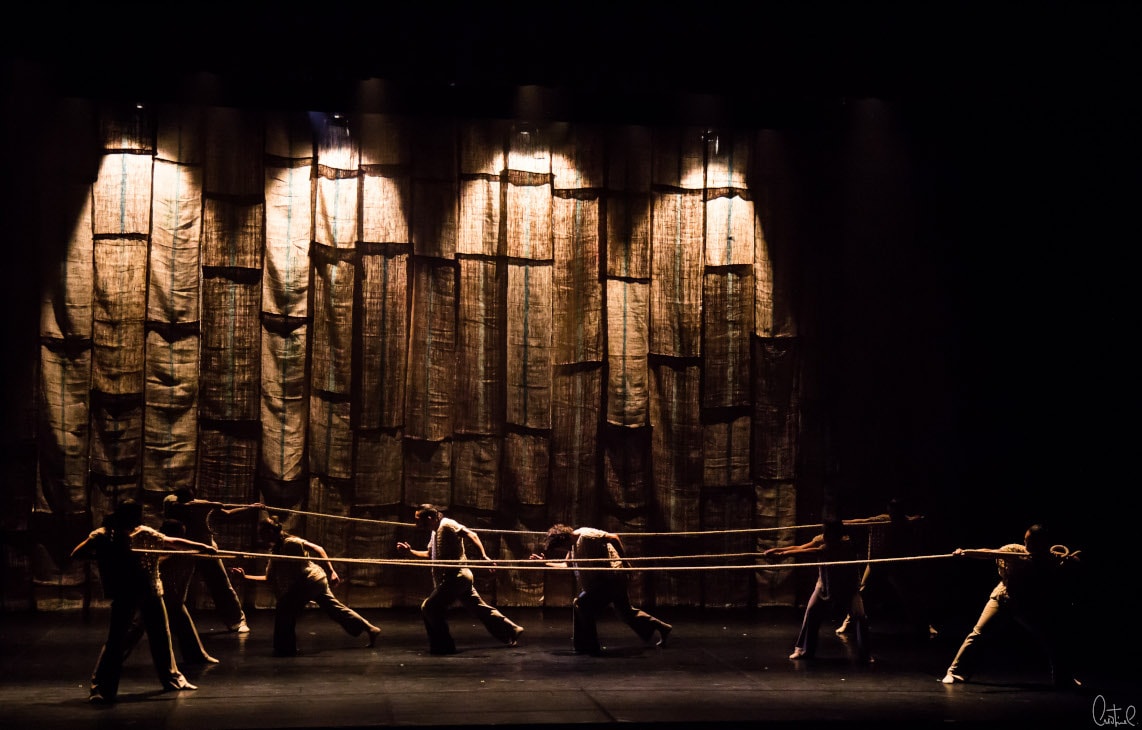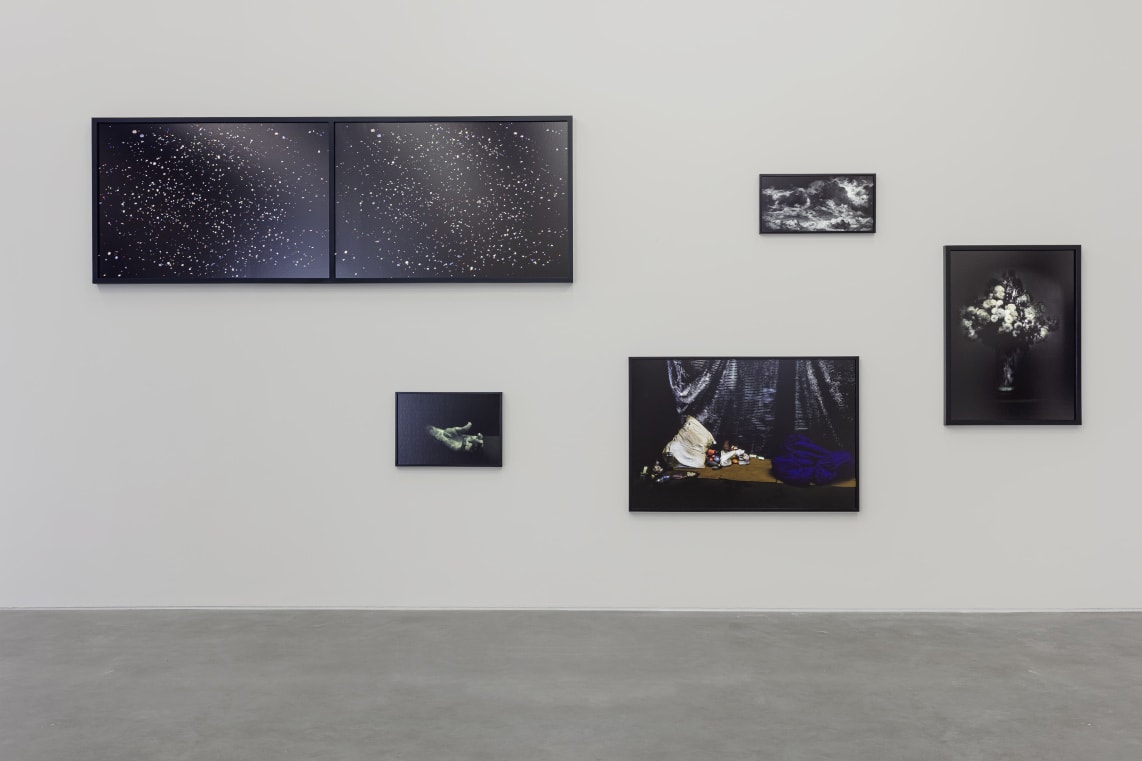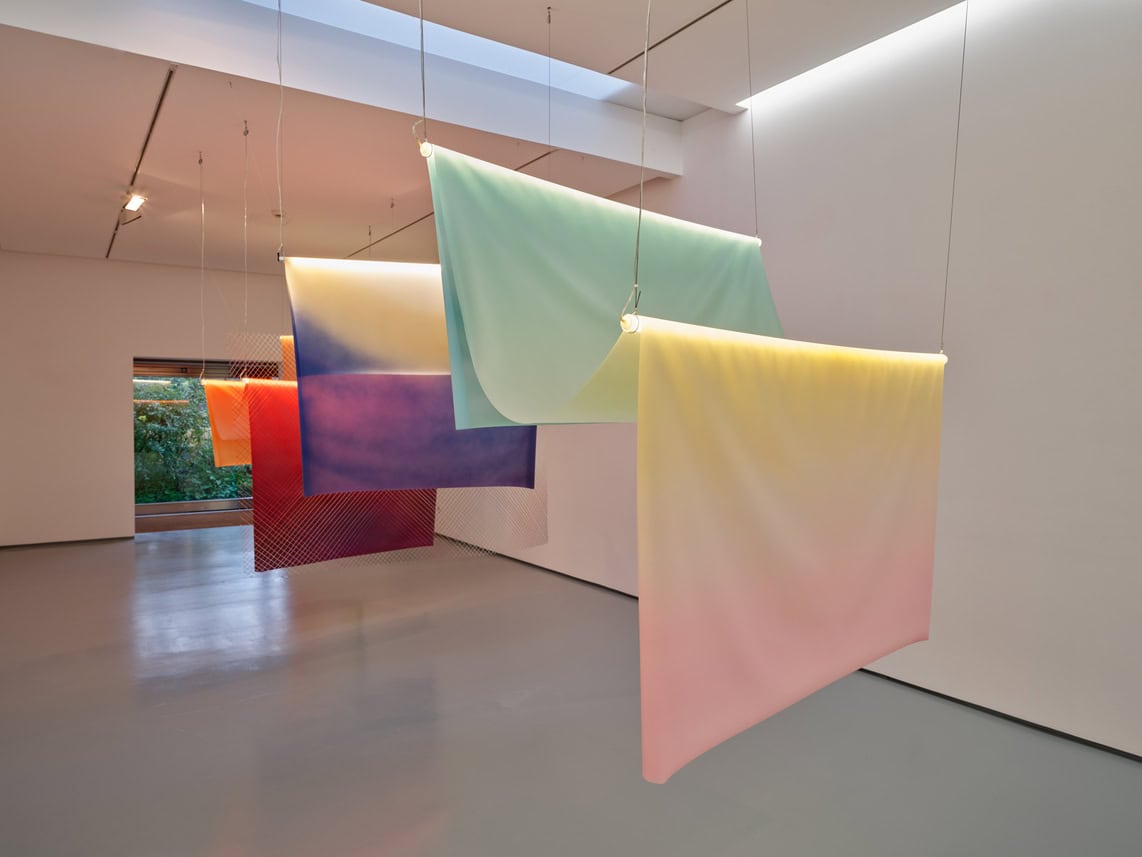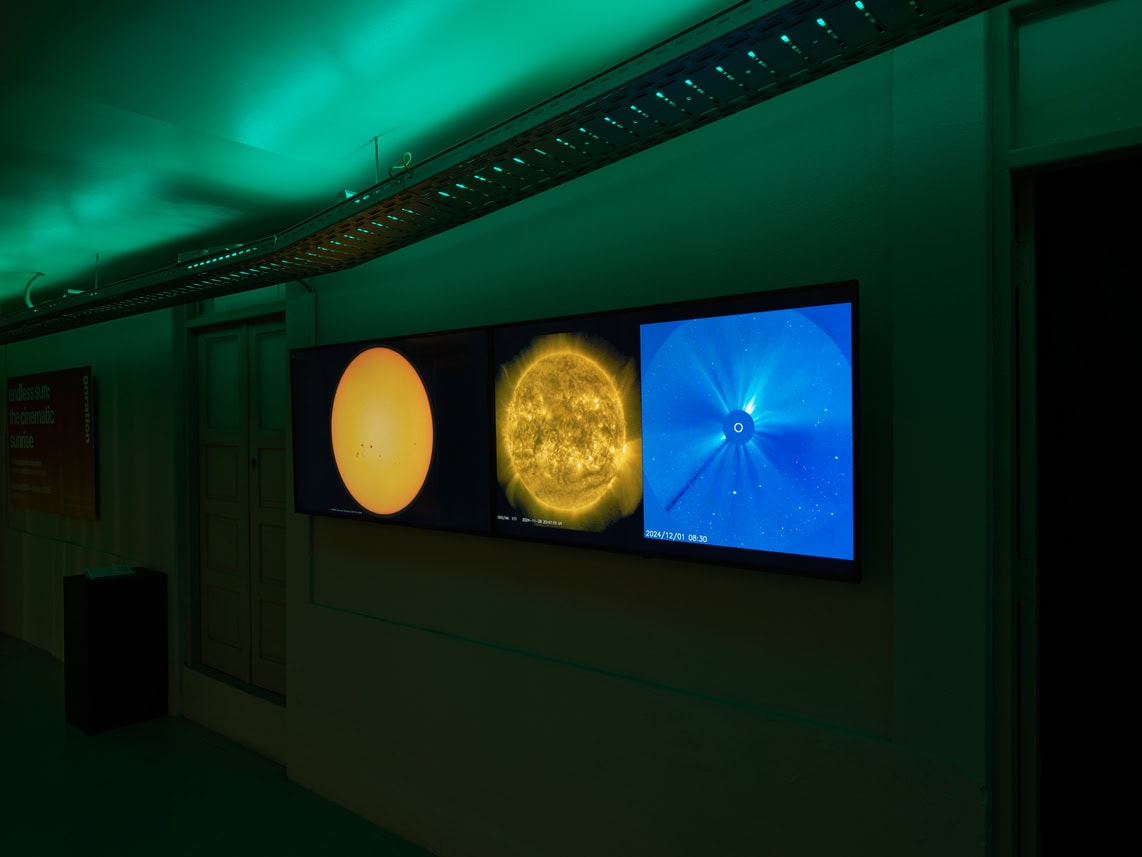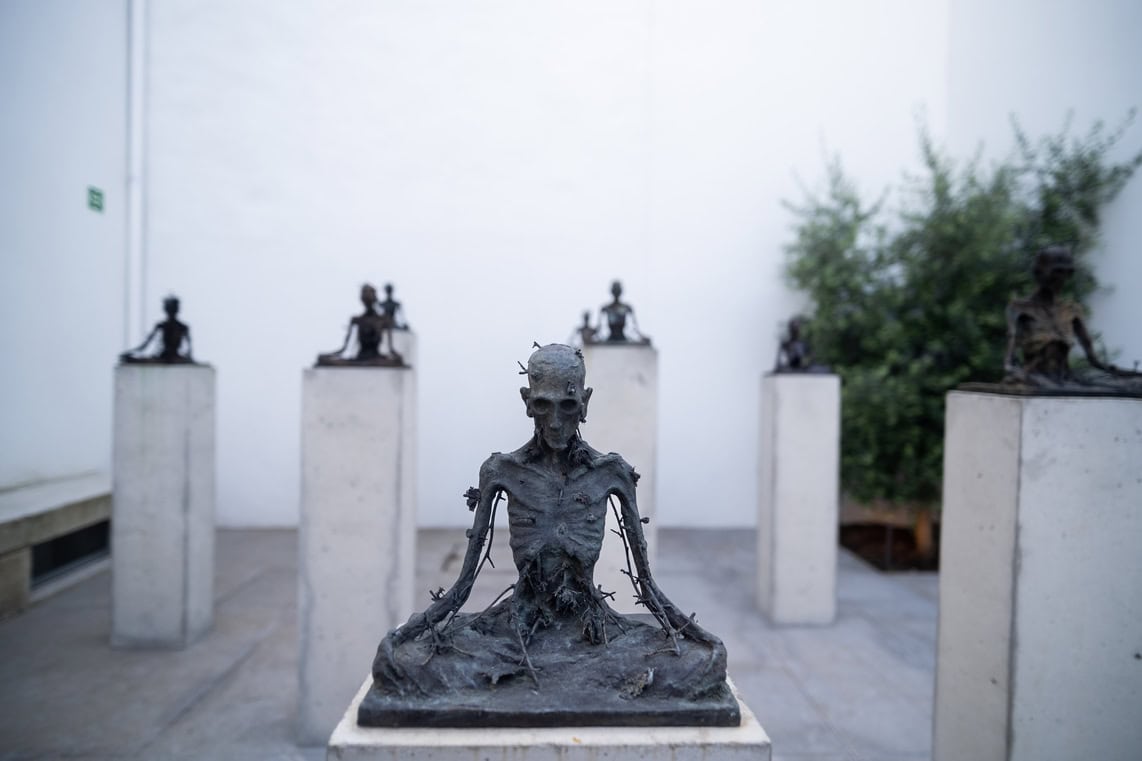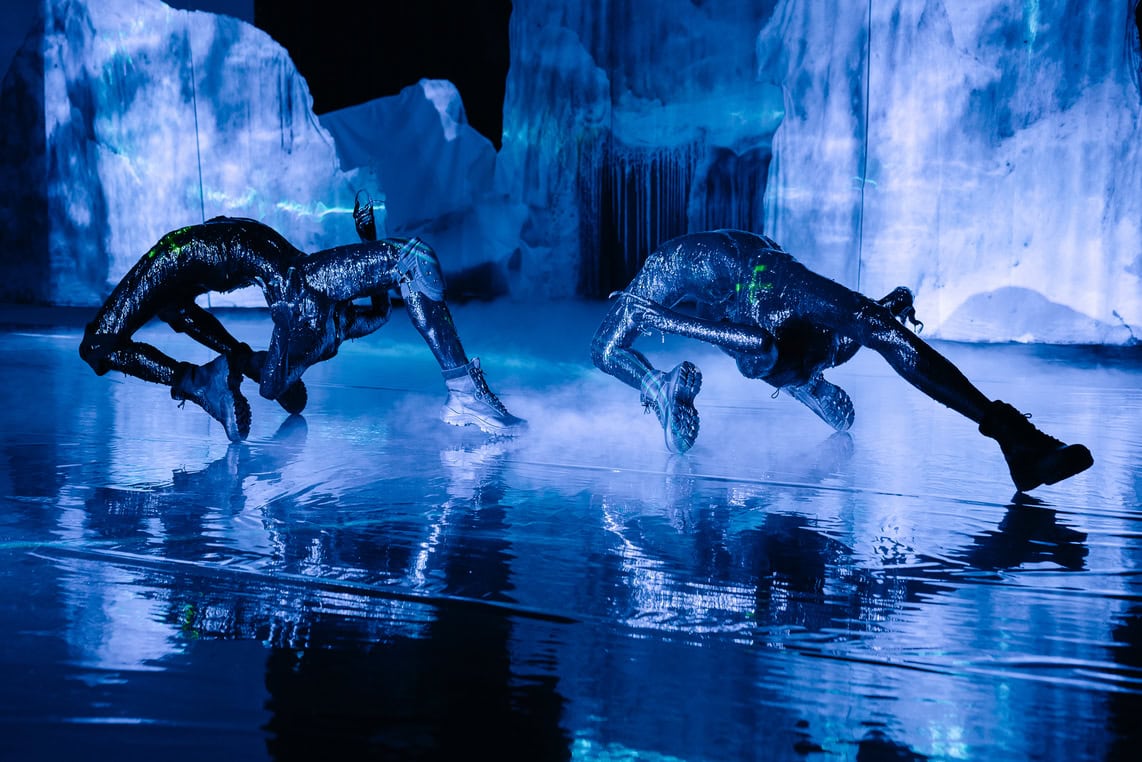Drawing on the legacy, influence and importance of surrealism in the visual arts, A Revolução na Noite, curated by Ana Anacleto at Centro de Arte Oliva (CAO), is presenting for the first time nearly 200 artistic productions made between 1910 and 2021 from Coleção Millennium bcp, Coleção de Arte Moderna e Contemporânea Norlinda e José Lima and Coleção de Arte Bruta/Outsider Treger/ Saint Silvestre – the latter two in long-term storage at CAO.
Surrealism was an art and literary movement developed during the 1920s in Paris, as one of the avant-garde trends of the early 20th century in Europe, alongside the likes of Dadaism, Futurism and Cubism. Largely influenced by the psychoanalysis of Sigmund Freud (1856-1939), it stands out for its extolling of pure psychic automatism, i.e., the rejection of the control exerted by reason in artistic expression. In the first Surrealist Manifesto, written by André Breton (1896-1966) in 1924 (almost a century ago), the poet coined the word surrealism, as a tribute to the author Guillaume Apollinaire (1880-1918), to best describe this new type of expression, steeped in a dreamlike state without aesthetic or moral concerns, criticising realism and reason while embracing dreams, magic, mystery and freedom. The night was the most telling moment of its premise, featuring and being referred to innumerable times in painting and poetry. Its leading representatives are André Breton, Antonin Artaud, Luis Buñuel, Max Ernest, René Magritte and Salvador Dalí. In Portugal, surrealism followed the French example, focussing on painting and poetry, with Mário Cesariny, Pedro Oom, António Maria Lisboa, Marcelino Vespeira, Cruzeiro Seixas and Alexandre O’Neill standing out, to name but a few.
Surrealism’s legacy was the possibility of questioning the capitalist logic of 19th century Western bourgeois society (alongside the other avant-gardes), attempting both to break with the notions of positivism and rationalism, but also, and above all in the visual arts, to shatter realism, introduce psychic automatism into artistic creation, promote formal freedom, and ponder authorship, genius and the author’s singularity, for instance in collective games such as the exquisite corpse. According to Mário Cesariny (1923-2006) in the foreword to A Intervenção Surrealista (1997): “No movement like surrealism has ever proposed so much at once, a real citizenship for all and a true freedom of each one with oneself. A synthesis bound for the greatest clashes because its time and politics are not the unique time of poetry (…)”.[1]
Surrealism attempted to deconstruct some of the moralising notions and customs of its day, constructing a utopia through art, but the greatest influence it has left us is perhaps this liberating ability in artistic creation, in the tension between the socio-cultural aspect and the personal and subjective realm. Psychoanalyst Suely Rolnik (b. 1948) believes that Freud founded psychoanalysis in the 19th century out of an urgency to reconnect the spirit with the drive, building this thought theoretically, but also devising a ritual in which to make this connection. The tension between the personal and transpersonal dimensions of human experience often sets off a kind of vital alarm, a certain discomfort. Humans reconnect with their condition as living beings, part of an environmental, social and mental ecosystem, to, through desire, keep life in balance by inventing new scenarios. New worlds and possibilities, both in the social and subjective fields. Not only for the one who took part singularly, but in the subjectivity of all those involved, in the transformation of socio-cultural map-making[2].
From this tension between the personal and the transpersonal, the surrealist movement demanded a time for subjectivity, poetry and art, within the repression of the human condition, bearing in mind this desire and drive to generate new scenarios and worlds. Like Freud, the Surrealists sensed that there was an urgent need to reconnect the spirit with the drive, not through reason, but through sensations and human subjectivity. This is still one of their greatest influences on the visual arts today.
A Revolução na Noite – alluding to Max Ernst’s Pietà or La révolution la nuit (1923), a forerunner painting of what would become the Surrealist movement – offers a free and stripped-down approach to different narratives, aesthetic, stylistic and symbolic associations, fuelling the imagination, but also reflection on the significance of dreams, poetry, magic and speculative thought in artistic practices and worldviews. These factors have already been recognised as having ties to surrealism, in an attempt to think about its importance in contemporary visual arts. The exhibition project takes place among paintings by the most significant authors of Portuguese surrealism, together with contemporary artists who use other media, such as photography or sculpture, mixing colours, shapes and meanings freely. But the exhibition stands out for integrating works of Art Brut/Outsider art, with no preconceptions or qualms, in an open dialogue with institutional contemporary art. While the term outsider art was suggested by historian Roger Cardinal (1940-2019) in 1972, art brut was coined by artist Jean Dubuffet (1901-1985) at the end of the Second World War, when he started looking for and identifying art produced in Swiss and French psychiatric hospitals. After founding the Compagnie de l’art brut collective, whose member was André Breton, as well as numerous artists, poets and intellectuals, his project can be seen as a counter-cultural movement, in which, as with surrealism, he and Breton were more concerned with the unconscious than with lunacy, according to Andreia Magalhães, the CAO’s Artistic Director[3].
With the centenary of Mário de Cesariny’s birth in 2023 and the publication of André Breton’s First Surrealist Manifesto in 2024, Ana Anacleto’s suggestion in the exhibition’s supporting text that the night is a “particularly fertile context for building a revolution” echoes the Surrealists’ utopian ideas of freedom, dreams, mystery, intoxication, desire, wonder, magic and poetry.
A Revolução na Noite, opened as part of the 10-year celebration of Centro de Arte Oliva, will be on show until May 12, 2024.
[1] Cesariny, M. (1997). A Intervenção Surrealista. Lisboa: Assírio & Alvim, p. 9.
[2] Rolnik, S. (March 12, 2022). Psicanalistas Que Falam. Available in: <https://www.youtube.com/watch?v=y0SDyvf71kc>.
[3] Leonorana. (October 27, 2023). A Broader Field: Andreia Magalhães and Isabel Carvalho. Available in <https://ext.maat.pt/longforms/broader-field>.
